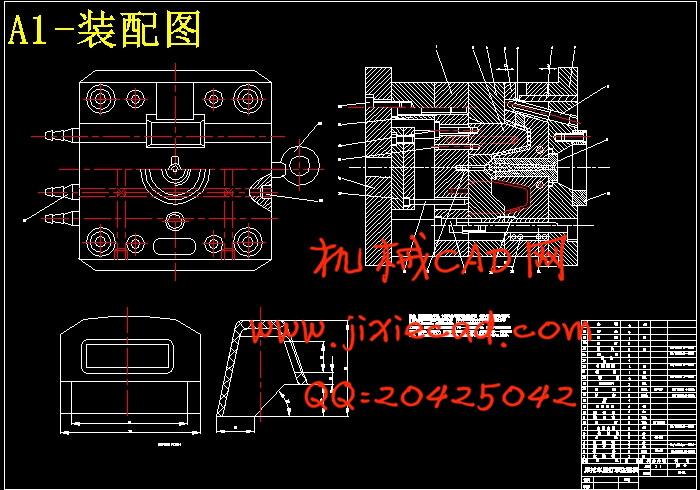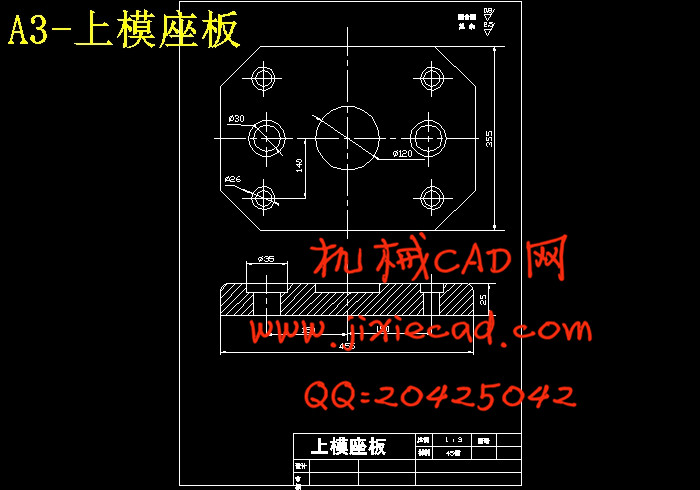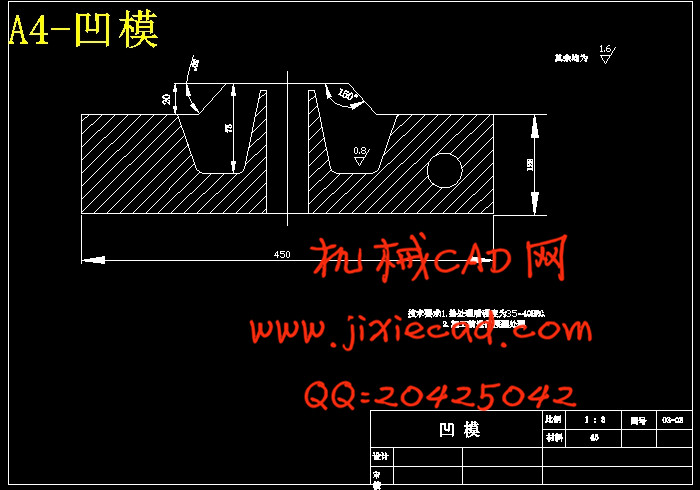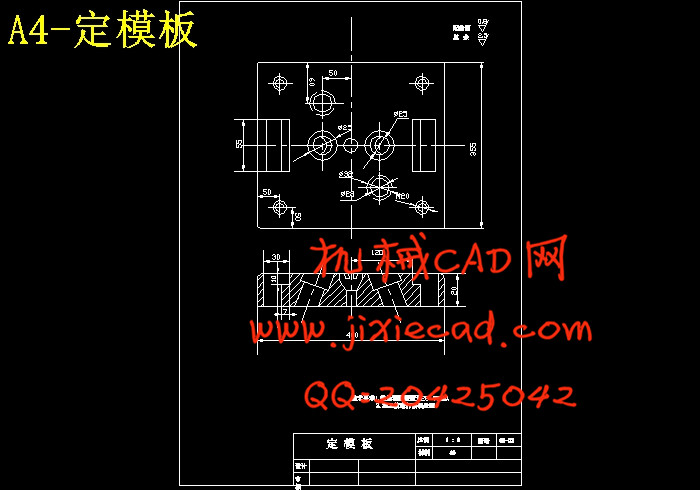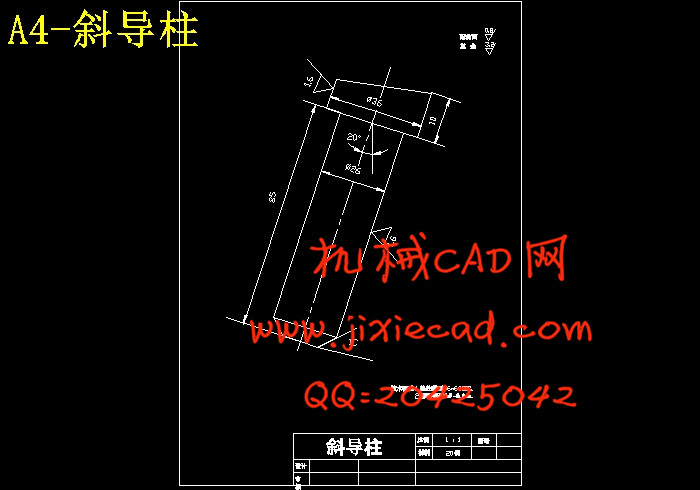设计简介
摩托车尾灯罩注塑模设计
摘要
分析了摩托车尾灯罩的结构特点,介绍了该塑料件的注塑模具结构,以及该模具设计中浇注系统设计时面积比和流动比的校核方法。还介绍了此模具抽芯机构及复位机构的结构特点,以及在进行冷却系统设计时确定冷却水管数目的详细计算过程及模具中部分零件的材料选用。
该模具结构紧凑,合理经生产使用,各部分动作准确可靠,有效地解决了点浇口注射成型模成型薄壁制品常见的缺陷问题,塑件质量稳定,符合设计要求,
可以实现大批量生产,而且生产效率高。
关键词:摩托车尾罩 注塑模具 浇注系统 抽芯机构 复位机构
Design of the injection mould for the motorcycle light cap
Abstract
The structure characteristics of the plastic part is analyzed, the structure of the injection mould is introduced, as
Well as the area ratio and 1iquid ratio calculate method in the pouring system of the mould design. The structure of pulling mechanism and resetting mechanism of the injection mould is also introduced as well as the determination of the quantity of cool water pipe and the material selection for the partial parts in the design of the cooling system.
This mold structure compact, reasonably after production use, each part of movements accurate reliable, effectively solved a runner to inject the mold to take shape the thin wall product common flaw question, modelled a quality stably, conformed to the design requirement, might realize the mass production, moreover the production efficiency was high。
Keywords: motorcycle light cap, injection mould, pouring system, pulling mechanism, insetting mechanism
目录
绪论…………………………………………………………………………………1
第一章 塑件工艺编程的编制………………………………………………4
1.1塑件的工艺性分析………………………………………………4
1.2计算塑件的体积和质量………………………………………5
1.3塑件注塑工艺参数的确定…………………………………6
第二章 确定模具结构方案…………………………………………………7
2.1注塑模的结构设计……………………………………………7
2.1.1分型面选择…………………………………………………7
2.1.2 确定型腔的排列方式……………………………………8
2.1.3浇注系统设计………………………………………………8
2.1.4 定模推出机构设计………………………………………9
2.1.5 动模侧向抽芯机构和推出机构设计… ……………10
2.1.6成型零件结构设计………… ……………… …………11
第三章 模具设计的有关计算……………………………………………12
3.1型腔和型芯工作尺寸计算…………………………………12
3.2型腔侧壁厚度和底板厚度计算… ………………………13
第四章 模具加热与冷却系统的计算…………………………… ……15
4.1求塑件在硬化时每小时释放的热量Q…………………15
4.2求冷却水的体积流量V……………………………………15
第五章 模具闭合高度的确定……………………………………………16
第六章 注塑机有关参数的校核…………………………………………16
第七章 绘制模具总装图和非标零件工作图…………………………17
第八章 主要零件加工工艺规程…………………………………………18
结 论………………………………………………………………………………20
致 谢………………………………………………………………………………22
参考文献…………………………………………………………………………23
摘要
分析了摩托车尾灯罩的结构特点,介绍了该塑料件的注塑模具结构,以及该模具设计中浇注系统设计时面积比和流动比的校核方法。还介绍了此模具抽芯机构及复位机构的结构特点,以及在进行冷却系统设计时确定冷却水管数目的详细计算过程及模具中部分零件的材料选用。
该模具结构紧凑,合理经生产使用,各部分动作准确可靠,有效地解决了点浇口注射成型模成型薄壁制品常见的缺陷问题,塑件质量稳定,符合设计要求,
可以实现大批量生产,而且生产效率高。
关键词:摩托车尾罩 注塑模具 浇注系统 抽芯机构 复位机构
Design of the injection mould for the motorcycle light cap
Abstract
The structure characteristics of the plastic part is analyzed, the structure of the injection mould is introduced, as
Well as the area ratio and 1iquid ratio calculate method in the pouring system of the mould design. The structure of pulling mechanism and resetting mechanism of the injection mould is also introduced as well as the determination of the quantity of cool water pipe and the material selection for the partial parts in the design of the cooling system.
This mold structure compact, reasonably after production use, each part of movements accurate reliable, effectively solved a runner to inject the mold to take shape the thin wall product common flaw question, modelled a quality stably, conformed to the design requirement, might realize the mass production, moreover the production efficiency was high。
Keywords: motorcycle light cap, injection mould, pouring system, pulling mechanism, insetting mechanism
目录
绪论…………………………………………………………………………………1
第一章 塑件工艺编程的编制………………………………………………4
1.1塑件的工艺性分析………………………………………………4
1.2计算塑件的体积和质量………………………………………5
1.3塑件注塑工艺参数的确定…………………………………6
第二章 确定模具结构方案…………………………………………………7
2.1注塑模的结构设计……………………………………………7
2.1.1分型面选择…………………………………………………7
2.1.2 确定型腔的排列方式……………………………………8
2.1.3浇注系统设计………………………………………………8
2.1.4 定模推出机构设计………………………………………9
2.1.5 动模侧向抽芯机构和推出机构设计… ……………10
2.1.6成型零件结构设计………… ……………… …………11
第三章 模具设计的有关计算……………………………………………12
3.1型腔和型芯工作尺寸计算…………………………………12
3.2型腔侧壁厚度和底板厚度计算… ………………………13
第四章 模具加热与冷却系统的计算…………………………… ……15
4.1求塑件在硬化时每小时释放的热量Q…………………15
4.2求冷却水的体积流量V……………………………………15
第五章 模具闭合高度的确定……………………………………………16
第六章 注塑机有关参数的校核…………………………………………16
第七章 绘制模具总装图和非标零件工作图…………………………17
第八章 主要零件加工工艺规程…………………………………………18
结 论………………………………………………………………………………20
致 谢………………………………………………………………………………22
参考文献…………………………………………………………………………23


